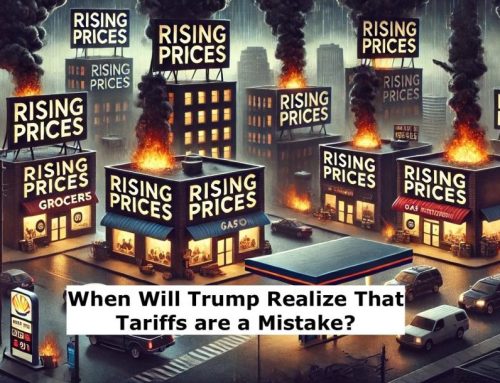You have a mortgage coming up for renewal, and you have plans to purchase a new home. What do you do with your current mortgage? This is a situation many find themselves in. Your lender presents you with all your options. 5 year variable rate, 1 year fixed, 5 year fixed and everything in between. Since your plans are to move within the year, your choice becomes all that much harder. So which is the best choice?
You basically have four different options here:
- Renew into an open mortgage.
- Renew into a 5 year fixed term with the intention to port the mortgage over to the new property.
- Renew into a shorter term mortgage and try to time it with your move.
- Renew into a 5 year variable mortgage with the intention to break the mortgage early.
Now let’s take a look at each option individually, as well as the pros and cons of each:
Renew into an open mortgage
An open mortgage is one that can be broken at any time without penalty. Rates on open mortgages are very high compared with the closed options. A closed mortgage just means that there would be a penalty to break the mortgage early. Since the rate is so high, open mortgages useful only for very short term. Maybe a month or two at the most. Anything longer than this, and you may want to consider a porting your mortgage, or going with a variable rate with the intention of breaking it early. Another option may be to convert your current mortgage into a HELOC (Home Equity Line of Credit) if your lender has this option (most lenders do not). This is another form of open mortgage that would carry a much lower rate than a traditional open mortgage.
Renew into a 5 year fixed term with the intention to port the mortgage over to the new property.
Porting is where you simply transfer your current mortgage over to the new property. This allows you to preserve your rate, as well as avoid any penalties for breaking your mortgage early. If additional funds are required to complete the new purchase, which is usually the case, then a blended mortgage would be required. Your current rate would apply on the remaining balance of your mortgage, and would be valid until the end of your term. Any additional funds that are required would then be added on at the current rate at the time you apply for the new mortgage. The two would then be blended together for a single rate and payment.
Porting can be good in an environment where rates have increased substantially by the time you need the new mortgage. It allows you to preserve your old rate, and in most cases, add on the additional funds needed to the same mortgage, which would be charged at the current rate at the time. The two would then be blended together for a single rate and payment. This is what’s known as a blended rate mortgage. This is usually only available on fixed rate mortgages, however, there is a very small number of lenders who will allow blended rate mortgages on variable products as well.
Porting is not always the best option though, as you have no negotiating power on the rate you are offered for the increase in funds. Often, it makes more sense to break the mortgage, pay the penalty, and open up all your other options. If you think you are going to need a new mortgage within a few months to a year after your mortgage renewal, then you may want to consider a port. However, every situation can be a little different. It comes down to where rates are at the time, where rates may be headed, and as well as the actual length of time before you need the new mortgage.
If you don’t plan on moving for over a year, then I usually don’t suggest a longer term fixed if your intention is to port it, as it’s not always the best strategy. I’d suggest either a 2 year fixed with your current lender, a 3 year fixed, or variable rate product.
A few important things to note:
- Policy on porting can vary from lender to lender.
- Some lenders will still charge a penalty and work it into the blended rate. It appears as though you’re not paying a penalty, however it’s just buried into the mortgage rate.
- Some lenders do not do blended rate mortgages.
- Make sure you ask your mortgage specialists on the terms and conditions surrounding the port if you are considering this as an option.
If you’d like to learn more, read my blog on porting for further tips and information!
Renew into a shorter term mortgage and try to time it with your move.
If you are planning on moving after 2 or 3 years, but are not quite sure yet, then you may want to consider a shorter term which is closest matched to your plans. If you have a 3 year plan, then select a 3 year fixed. The problem with this is that shorter term mortgages are not priced as cheaply as they used to be. In some cases, the shorter term rates are not much lower than the 5 year alternatives. In other cases, they are the same, however, in most, they are actually higher than what you can get with a 5 year term. Still… if the plan is to break the mortgage after 3 years, then a 5 year mortgage doesn’t necessarily make sense, even if the rate is the same. For the most part, shorter term mortgages apply to fixed rates only, however, there is the odd 3 year variable floating around, although it’s not very common and most lenders don’t offer it.
Renew into a 5 year variable mortgage with the intention to break the mortgage early
Variable rates are good options for many in these cases, since they typically carry a lower penalty than fixed rate mortgages…. especially if you are dealing with a big bank. (Break penalties on fixed rate mortgages from the major banks can be as much as 500% higher (or even more) than most non-bank lenders). With variable rate mortgages, the penalty is usually three months interest, bank or non-bank. Just be aware that there are some exceptions on this. Also, some lenders will use prime rate to calculate the three months interest penalty, as opposed to the rate your payments are based on (known as the contract rate), which would result in a larger penalty. Always ask how the penalty is calculated.
Variable rate mortgages can be good options for anyone who is unsure of their future plans and want to maintain more flexibility. Since the rate is lower than the fixed rates, you can usually save more than the cost to break the mortgage, so the penalty becomes less of an issue. Just as with everything else, there are always exceptions.
Pretty much all variable rate mortgages are portable, which would save you the penalty, however, most lenders will only let you port over the remaining balance. If you need an increase to your mortgage, then the only option would be to break the mortgage and pay the penalty. There are a very small number of lenders who will do blended variable rates, but the vast majority do not.
Whenever your mortgage comes up for renewal, it’s always best to look at options from other lenders as well, as you can often save more money by switching lenders as opposed to simply renewing with your current lender. In many cases, there can be much lower rates available by switching.
All situations are different and the above advice will not apply in every case. Speak with your mortgage professional about your plans, and your options. They can then help to determine the course of action that is best suited to you.
Paul Meredith is the author of the Amazon #1 best selling book, Beat the Bank – How to Win The Mortgage Game in Canada, and has ranked as one of the top 75 mortgage brokers in Canada since 2016. He was a finalist for Mortgage Broker of the Year in 2018, and can be seen as the exclusive mortgage broker on season two of TV’s Top Million Dollar Agent.








Leave A Comment